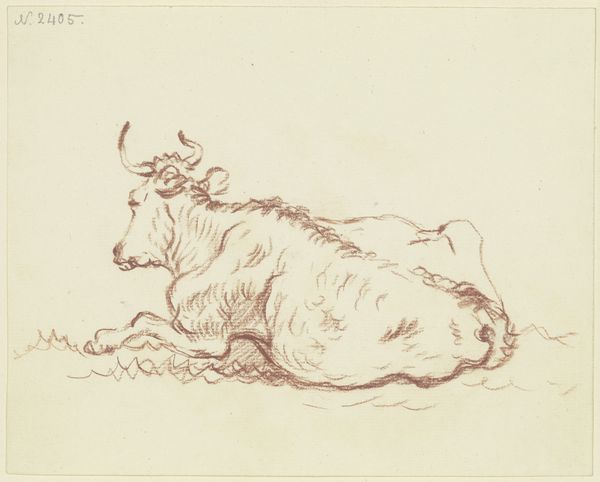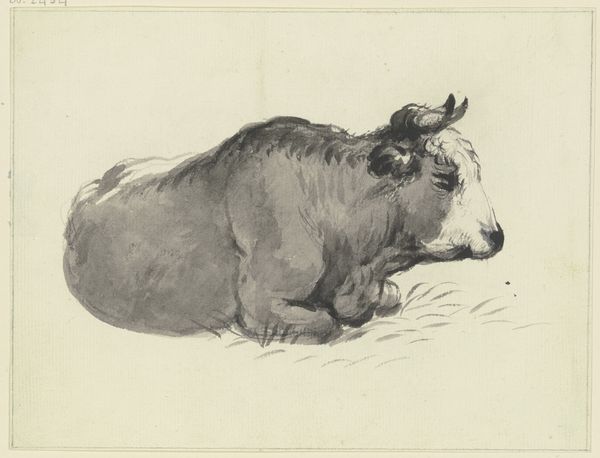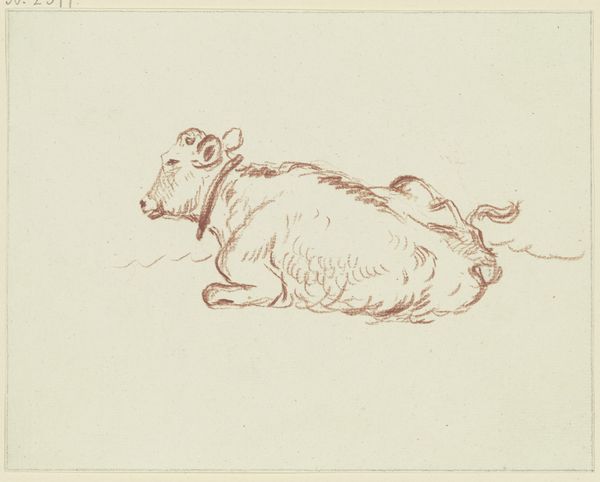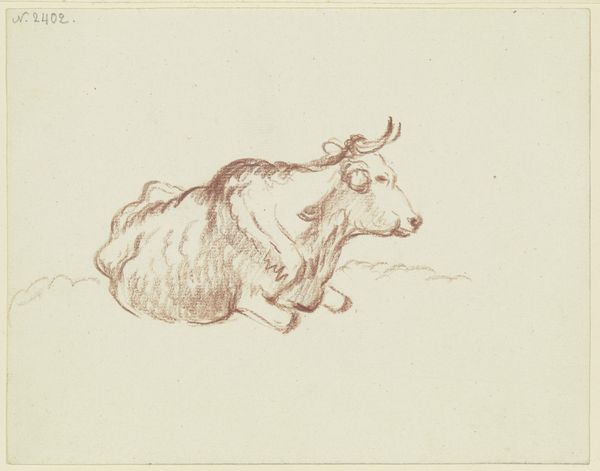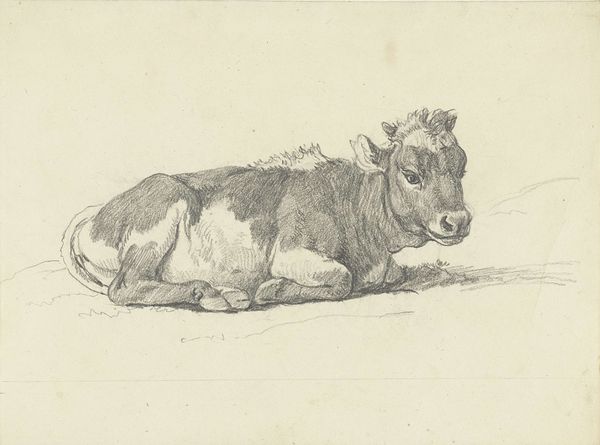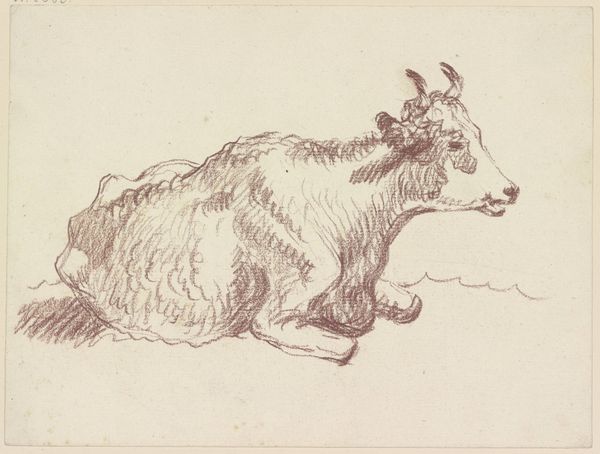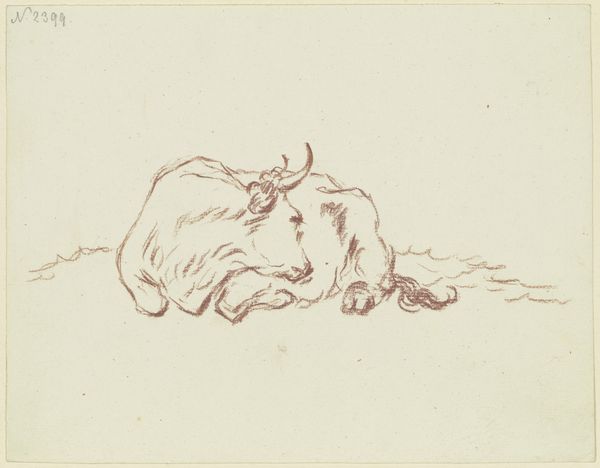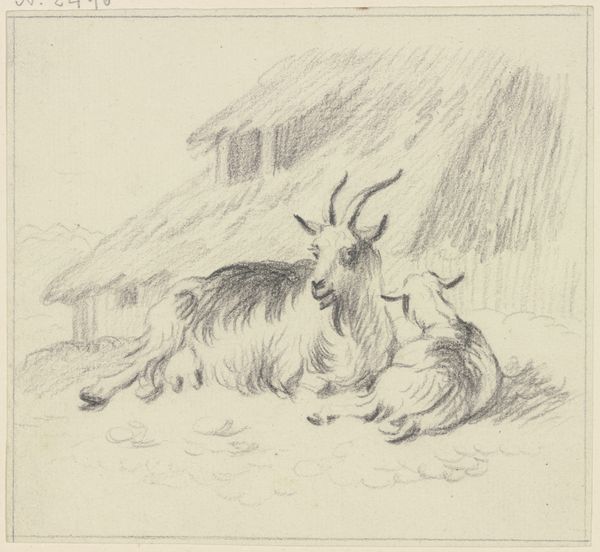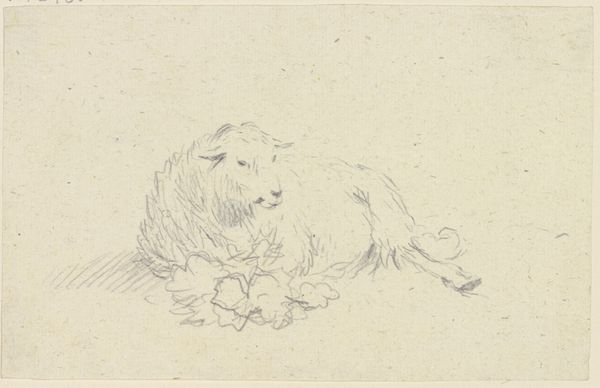
drawing, pencil
#
drawing
#
landscape
#
pencil
#
15_18th-century
#
realism
Copyright: Public Domain
Curator: We're looking at "Lying Cow to the Right," a pencil drawing housed here at the Städel Museum, attributed to Friedrich Wilhelm Hirt. It's a simple, delicate rendering. Editor: Ah, yes. What strikes me first is its quietude. A moment of pastoral serenity caught in graphite. You can almost feel the sun-warmed earth beneath her. Curator: Exactly. The drawing has a directness. There's a confidence in the lines that suggests Hirt wasn't trying to impress, but simply to record what he saw. Editor: But is there more to it than that? Even in its seeming simplicity, the cow is a powerful symbol, isn’t she? She represents fertility, nourishment, and the ancient rhythms of rural life. In some cultures, a symbol of maternal qualities. Curator: I like that you're going deeper. Think about what a drawing like this would have meant in its time—likely the late 18th century, placing it on the cusp of industrialization. It's a snapshot of a disappearing world, isn't it? A bucolic dream on the verge of being disrupted. Editor: Absolutely. And even the medium, humble pencil on paper, lends to that sense of fleeting beauty. It feels so intimate, as though we’ve stumbled upon Hirt’s private sketch. Almost ghostly quality to it because there are more sketched cows further behind in the image. Curator: Precisely! And in that intimacy, a universal connection. Whether we’re artists, poets, farmers, or just passersby, we can all appreciate the simple grace of this recumbent creature. There’s such familiarity. Editor: It invites contemplation, a chance to reconnect with our own primal selves. What an insightful little study. Who knew a lying cow could hold so much symbolism? Curator: Indeed. "Lying Cow to the Right"—it may seem modest, but it quietly speaks volumes about history, symbolism, and our own enduring connection to the natural world.
Comments
No comments
Be the first to comment and join the conversation on the ultimate creative platform.


